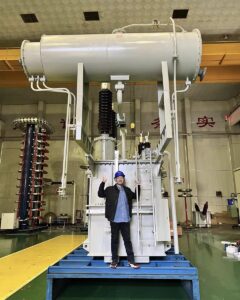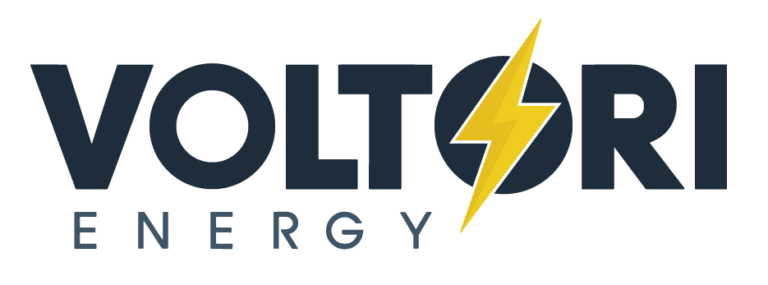Finding the right transformer at the right price can be overwhelming. With countless options available and prices varying widely, many renewable energy developers face costly mistakes when budgeting for power infrastructure projects.
CSA certified transformers in Canada typically cost between $8,000 for basic 75kVA models up to $75,000+ for larger 2000kVA commercial units. Certification adds 15-20% to base costs, while custom engineering for renewable applications can increase prices by an additional 25-40%.
 factors [transformer pricing](https://rexpowermagnetics.com/images/documents/News/Bulletin_-_Pending_Tariff_Action.pdf) factors](https://voltoritransformer.com/wp-content/uploads/2025/09/image-1-csa-certified-transformer-pricing-factors.png)
Transformer pricing isn't just about the unit itself. It encompasses certification requirements, transportation challenges across Canada's vast geography, and specialized engineering needs. Let's explore the key factors that influence transformer costs in the Canadian market to help you budget more effectively.
How Much Does It Cost to Buy a Transformer?
Budgeting for transformer purchases can be frustrating without clear pricing guidelines. Many project managers discover hidden costs too late, leading to budget overruns and delayed timelines.
Transformer purchase costs in Canada range from $5,000-$7,000 for small distribution units (under 50kVA) to $100,000+ for specialized power transformers (over 2500kVA). Additional expenses include installation ($2,000-$15,000), shipping (5-30% of unit cost), and site preparation.

When I evaluate transformer purchases for our clients, I always emphasize that the sticker price is just the beginning. The true cost of ownership extends far beyond the initial purchase. From my experience managing supply chains for renewable energy projects across Canada, I've identified several critical factors that impact the total investment required.
First, installation complexity varies dramatically based on site conditions. A simple pad-mounted transformer in an accessible urban location might cost just $2,000-$3,000 to install, while remote wind farm installations requiring crane access and specialized equipment can exceed $15,000. I recently coordinated a transformer installation for a solar farm in northern Alberta where road access limitations added nearly 40% to our expected installation budget.
Warranty and service agreements represent another significant cost component. Standard warranties typically cover 1-2 years, but many renewable projects require extended coverage of 5-10 years, adding 10-15% to the purchase price. This investment often pays dividends through reduced maintenance costs and improved reliability over the transformer's lifecycle.
Transformer Cost Breakdown by Component
| Component | Percentage of Total Cost | Key Cost Drivers |
|---|---|---|
| Core Materials | 25-35% | Copper/aluminum pricing, efficiency rating |
| Windings | 20-30% | Material quality, insulation class |
| Tank & Oil | 15-20% | Size, environmental protection features |
| Engineering | 10-15% | Customization level, special requirements |
| Testing & Certification | 10-20% | CSA/UL requirements, additional testing |
How Much Do Transformers Cost?
Price uncertainty creates major headaches when budgeting for energy projects. Without reliable cost benchmarks, estimating transformer expenses becomes a guessing game that can derail project finances.
Transformer costs vary by type: pole-mounted distribution transformers ($3,000-$15,000), pad-mounted units ($7,000-$50,000), and substation-class power transformers ($40,000-$500,000+). CSA certification adds approximately 15-20% to these base prices in the Canadian market.

The transformer market operates on numerous variables that impact pricing. Through my years negotiating with suppliers across North America, I've developed a comprehensive understanding of what drives these costs. Most customers don't realize that minor specification changes can significantly impact the final price.
Voltage class is a primary determinant of transformer cost. Low voltage distribution transformers (under 600V) are significantly cheaper than medium voltage (5kV-35kV) or high voltage (over 35kV) units. Each voltage class jump typically increases costs by 40-60%. This becomes particularly relevant for renewable energy projects seeking grid interconnection, where voltage matching requirements may necessitate more expensive transformers than initially anticipated.
Manufacturing origin also plays a substantial role in pricing. North American-made transformers generally command 25-40% price premiums over imported alternatives due to higher labor costs, stricter manufacturing standards, and reduced shipping times. However, this premium often translates to better reliability and easier warranty service. At Voltori, we've found that Canadian-made transformers frequently offer the best total value despite higher upfront costs due to their superior performance in our challenging climate conditions.
Transformer Price Comparison by Manufacturing Region
| Manufacturing Region | Price Index | Additional Considerations |
|---|---|---|
| Canadian-made | 115-130 | Fastest lead times, full CSA compliance, best cold-weather performance |
| US-made | 100-110 | Good availability, solid quality, may require CSA certification |
| European-made | 105-125 | High efficiency designs, excellent quality, longer lead times |
| Asian-made | 70-90 | Cost advantage, variable quality, longest lead times, potential certification issues |
How Much Do Commercial Transformers Cost?
Commercial projects face unique transformer challenges that residential developments don't encounter. Underestimating transformer requirements can lead to power quality issues, system failures, and expensive retrofits.
Commercial transformers in Canada range from $15,000 for basic 150kVA units to $100,000+ for 3000kVA models with advanced features. Custom-engineered transformers for specific applications like data centers or renewable energy typically command 30-50% price premiums over standard commercial units.

Commercial applications demand transformers that can handle higher loads, provide better power quality, and offer enhanced reliability. My team regularly consults on commercial transformer specifications, and I've observed several trends that impact pricing in this segment of the market.
Energy efficiency requirements have become increasingly stringent for commercial installations, with many jurisdictions now mandating minimum efficiency ratings. High-efficiency transformers (meeting or exceeding DOE 2016 or CSA C802.2 standards) typically cost 15-25% more than standard efficiency models but can deliver significant operational savings. For example, a recent solar farm project we supplied used premium efficiency transformers that cost $12,000 more upfront but will save approximately $40,000 in energy losses over a 15-year period.
Another crucial cost factor for commercial transformers is protection features. Enhanced surge protection, advanced monitoring systems, and specialized protection relays can add 10-30% to base costs but provide critical safeguards for sensitive equipment. This becomes especially important for wind and solar installations where power electronics are particularly vulnerable to damage from electrical anomalies.
The physical environment also influences commercial transformer pricing substantially. Indoor installations generally cost 10-15% less than comparable outdoor units which require weather-resistant enclosures, while installations in corrosive environments (coastal areas, industrial zones) or extreme temperature regions may require specialized materials that add 20-30% to standard pricing.
Commercial Transformer Cost Factors by Application
| Application | Relative Cost | Special Requirements |
|---|---|---|
| Office Buildings | 100 (baseline) | Standard requirements, typically indoor installation |
| Solar Farms | 125-140 | Harmonics management, DC bias protection, outdoor rated |
| Wind Farms | 130-150 | Reactive power capabilities, variable load management |
| Data Centers | 140-160 | Redundancy features, tight voltage regulation, low impedance |
| Industrial | 120-135 | Higher short-circuit ratings, robust mechanical design |
How Much Does a 112.5 kVA Transformer Weigh?
Transformer weight is often overlooked until delivery day, when logistics challenges emerge. Underestimating the massive physical presence of these devices leads to inadequate handling equipment and site preparation.
A typical 112.5 kVA transformer weighs between 650-850 kg (1,430-1,870 lbs), with liquid-filled models at the heavier end and dry-type units at the lighter end of this range. Weight varies by cooling method, enclosure type, and protection features.
 comparison](https://voltoritransformer.com/wp-content/uploads/2025/09/image-5-112-5-kva-transformer-handling-and-instal.png)
Weight considerations extend far beyond just knowing the number on the specification sheet. Through my experience coordinating transformer deliveries across Canada's diverse landscape, I've learned that weight impacts nearly every aspect of transformer logistics and installation.
Transportation costs are significantly influenced by transformer weight, especially when shipping to remote locations. A 112.5 kVA transformer's 650-850 kg weight requires specialized handling equipment and often dedicated transportation. For perspective, shipping this size transformer from our Vancouver facility to remote northern communities can cost 3-4 times more than shipping to major urban centers, primarily due to weight-related logistics challenges.
Foundation requirements also scale with transformer weight. A properly engineered concrete pad for a 112.5 kVA transformer typically needs to support 1.5-2 times the transformer's weight (approximately 1,200-1,700 kg capacity) to account for dynamic loads and environmental factors. This foundation work commonly adds $2,000-$4,000 to installation costs.
The choice between liquid-filled and dry-type transformers at this size rating presents interesting weight tradeoffs. While liquid-filled units are generally 15-25% heavier, they often offer better cooling efficiency and longer service life. Dry-type units reduce weight but may require additional cooling features for outdoor applications, potentially negating some of the weight savings.
112.5 kVA Transformer Weight Comparison by Type
| Transformer Type | Typical Weight Range | Installation Considerations |
|---|---|---|
| Liquid-filled (mineral oil) | 750-850 kg | Requires containment features, heavier foundation |
| Liquid-filled (natural ester) | 760-870 kg | Environmentally friendly, slightly heavier than mineral oil |
| Dry-type (VPI) | 650-750 kg | Lighter, suitable for indoor installations, sensitive to environment |
| Cast coil | 700-800 kg | Good environmental protection, middle weight range |
| Low-loss designs | +5-10% to base weight | Higher efficiency models contain more core material, adding weight |
Conclusion
CSA certified transformer costs in Canada vary widely based on capacity, voltage, features, and application requirements, typically ranging from $8,000 for basic units to over $100,000 for specialized applications. At Voltori Energy, we deliver custom-engineered power transformers specifically optimized for renewable energy applications across Canada.




